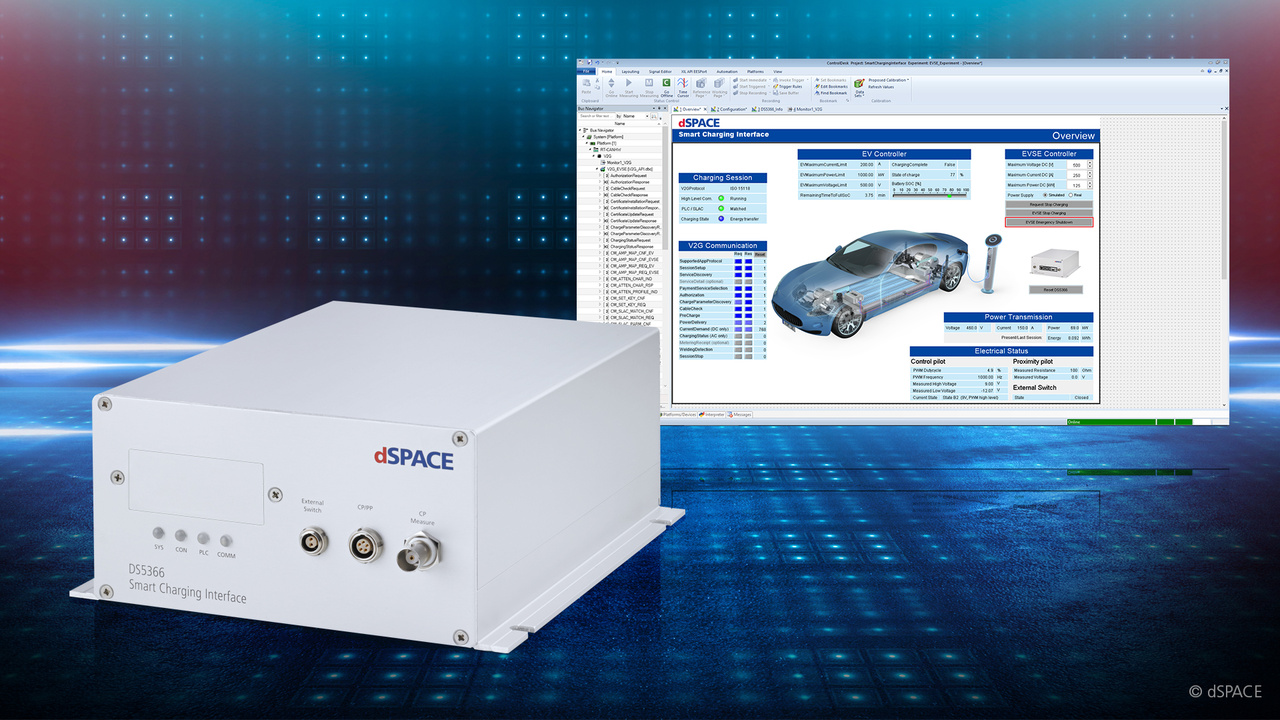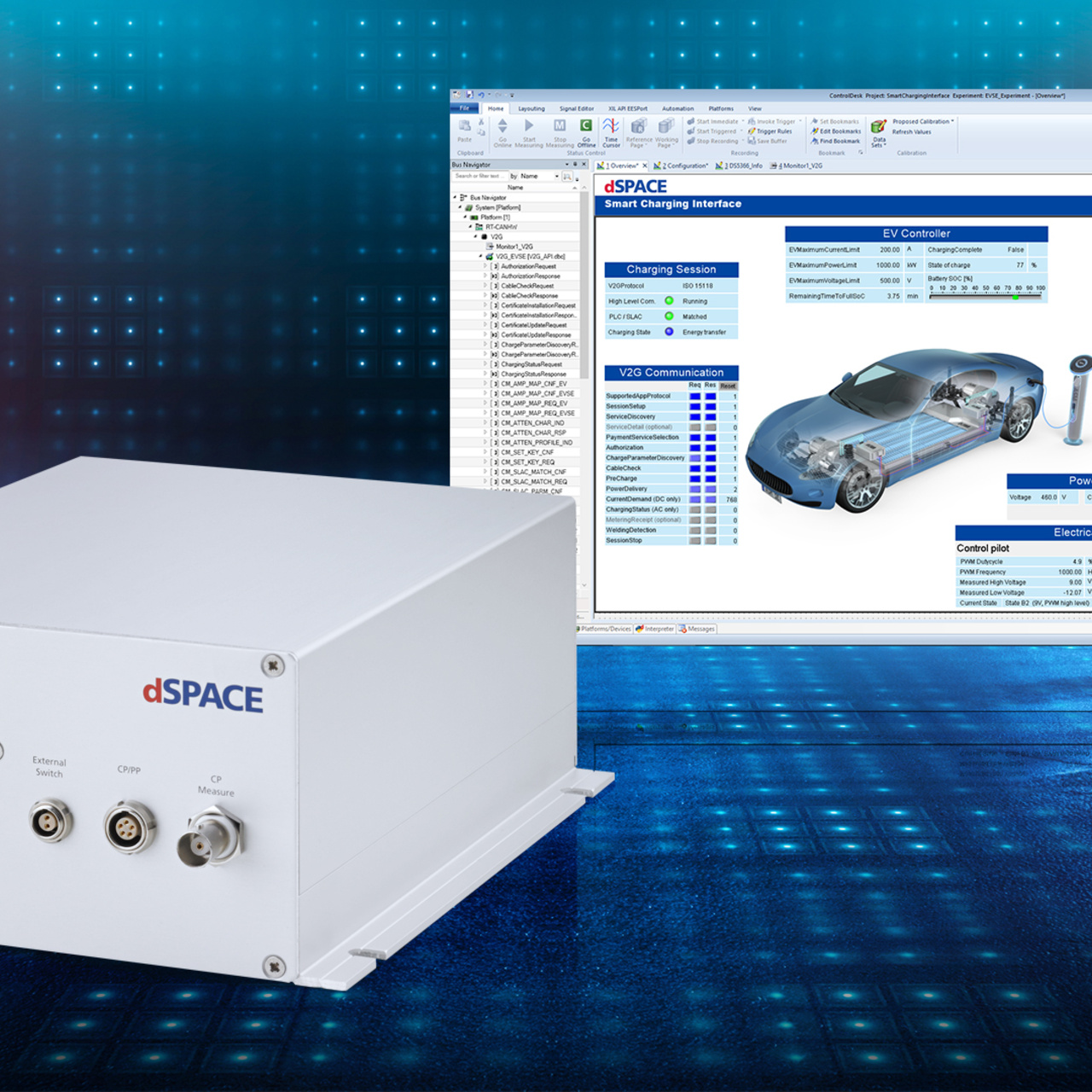Thanks to its high flexibility, the solution offers versatile application options, including the simulation of different AC and DC charging stations and electric vehicle behavior according to national and international charging standards to ensure a reliable charging process.
In this way, it supports both manufacturers of electric vehicles and manufacturers of charging stations in developing and testing smart charging technologies.
Key Benefits:
ISO 15118 and DIN 70121 powerline communication
CHAdeMO and GB/T support
Isolated interface between the HIL simulator and the ECU
Interfaces for all common charging plugs (e.g., Type 1, Type 2, CCS1, CCS2, GB/T, CHAdeMO)
Support of AC and DC charging
CAN FD interface for easy integration
Rapid control prototyping (RCP) as well as hardware-in-the-loop (HIL) simulation
Monitoring and manipulation of power-line communication used, e.g., for the pairing mechanism (Signal Level Attenuation Characterization, SLAC)
Simulation of errors during communication
Hardware and Software
The Smart Charging Solution includes hardware and software and can be easily integrated into your test setup. It supports all common charging communication standards.
The hardware component, the DS5366 Smart Charging Interface, comes as an isolated interface between the hardware-in-the-loop (HIL) simulator and the electronic control unit (ECU). It provides a CAN FD interface for connecting to the HIL simulator as well as USB and Ethernet interfaces for protocol tracing and data logging.
The Smart Charging Interface Software as the software part of the Smart Charging Solution includes a Simulink® model, ControlDesk layouts, and a DBC file that describes the CAN FD communication. The Simulink model supports all common charging communication standards, such as ISO 15118, DIN SPEC 70121, CHAdeMO, and GB/T. It includes a user interface for parametrization and allows for the connection and simulation of power electronics components. By using the ControlDesk layouts, you get an overview of all the relevant electrical information, the messages involved in the charging communication, and the communication status. You can also use the layout for configuration purposes, e.g., for parametrization as well as electrical and timing manipulation.
Simulating Charging Stations
Test real electric vehicles and onboard chargers by connecting them to simulated charging stations supporting different standards
Test various ECUs and power electronics components involved in the charging process
Real AC and DC charging with grid emulation and flexible DC power supplies
Simulating and Developing Onboard Chargers
Test charging stations with simulated vehicles
Replace the vehicle ECU or the communication controller for testing vehicle prototypes
Support of Conformance Tests
Test electric vehicle communication controllers according to all common charging standards using the dSPACE test authoring and automation tool Automation Desk
Open test implementation makes it possible to track test behavior effectively
Testing Plug-and-Charge Features
Transport Layer Security (TLS) supported for encrypted communication
Handling of digital certificates required for secure communication
Support of real and test public key infrastructure (PKI)




